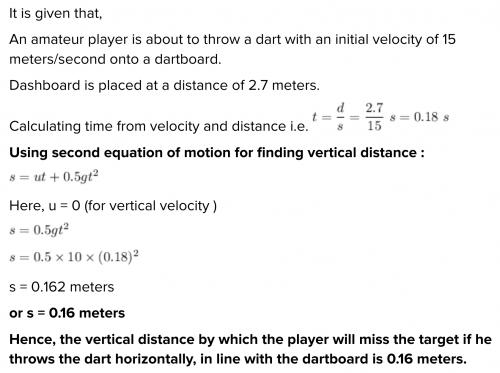plane LA534 will have to decrease it speed by twice that of plane LA639.
Explanation:
Since both planes want to land there must be a decrease in speed.
We are told that plane LA534 velocity is twice that of plane LA639.
Now for the two planes to land without a crash. the opposite or reverse will be the case in terms of deceleration, that is
Plane LA639 will have to decrease its speed by twice the decrease in speed of plane LA534


Answer:
Option DStep-by-step explanation:
D.
Heat each cube to the same temperature, place each cube into different containers with 500 grams of water at the same temperature, and measure the temperature of the water.
Answer:
see below.Step-by-step explanation:
To solve this problem, we can use the conservation of energy and conservation of momentum principles.
Conservation of energy:
The total initial energy is the rest energy of the proton and neutron, which is given by:
Ei = (mp + mn)c^2
where mp and mn are the masses of the proton and neutron, respectively, and c is the speed of light.
The total final energy is the rest energy of the deuteron plus the energy of the gamma ray, which is given by:
Ef = (md)c^2 + Eg
where md is the mass of the deuteron and Eg is the energy of the gamma ray.
According to the conservation of energy principle, the initial energy and final energy must be equal, so we have:
Ei = Ef
(mp + mn)c^2 = (md)c^2 + Eg
Conservation of momentum:
The total initial momentum is zero because the proton and neutron are at rest. The total final momentum is the momentum of the deuteron and the momentum of the gamma ray. Since the gamma ray is massless, its momentum is given by:
pg = Eg/c
where pg is the momentum of the gamma ray.
According to the conservation of momentum principle, the total final momentum must be equal to zero, so we have:
0 = pd + pg
where pd is the momentum of the deuteron.
Solving for md and pd:
From the conservation of energy equation, we can solve for md:
md = (mp + mn - Eg/c^2)/c^2
Substituting this expression into the conservation of momentum equation, we get:
pd = -pg = -Eg/c
Substituting the given values, we have:
mp = 1.6726 × 10^-27 kg mn = 1.6749 × 10^-27 kg Eg = 2.2 × 10^6 eV = 3.52 × 10^-13 J
Using c = 2.998 × 10^8 m/s, we get:
md = (1.6726 × 10^-27 kg + 1.6749 × 10^-27 kg - 3.52 × 10^-13 J/(2.998 × 10^8 m/s)^2)/(2.998 × 10^8 m/s)^2 = 3.3435 × 10^-27 kg
pd = -Eg/c = -(3.52 × 10^-13 J)/(2.998 × 10^8 m/s) = -1.1723 × 10^-21 kg·m/s
Therefore, the mass of the deuteron is 3.3435 × 10^-27 kg, and its momentum is -1.1723 × 10^-21 kg·m/s.
Answer:
9.6 metersStep-by-step explanation:
Time taken by the tomatoes to each the ground
using h = 1/2 g t^2
t^2 = 2h/g = 2 x 50/ 9.8 = 10.2
t = 3.2 sec
horizontal ditance = speed x time = 3 x 3.2 = 9.6 meters
 1
1 The question specifies the diameter of the screw, therefore the IMA of this screw is 0.812? / 0.318 = 8.02
 1
1 
It will provide an instant answer!
